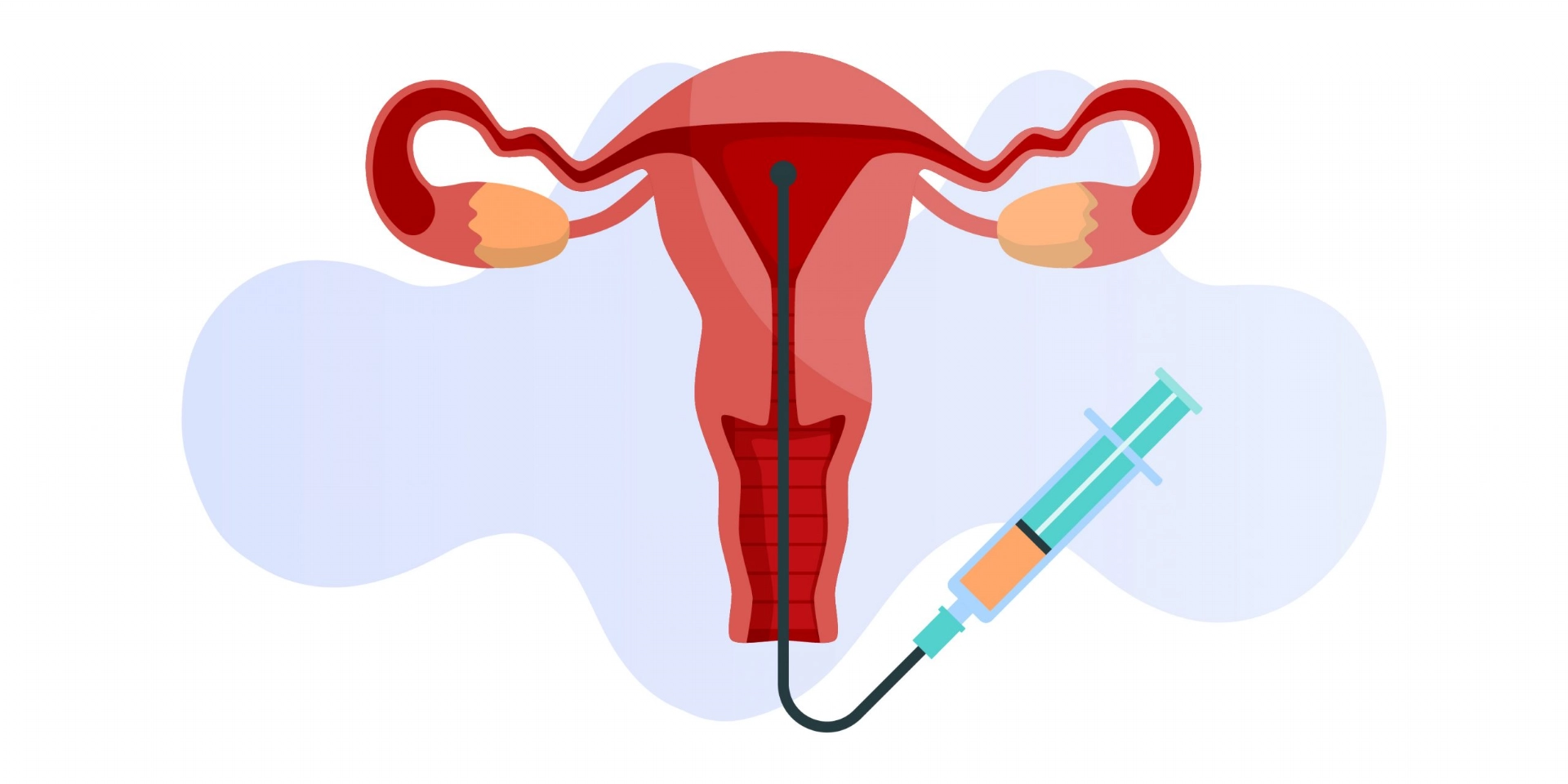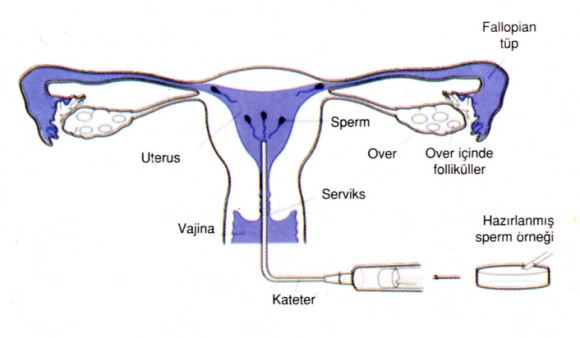
Insemination (IUI)
This procedure, known as intrauterine insemination,or IUI is the first preferred technique when the anatomical structure of the cervix or cervical secretion is not suitable, the male-related problem is mild, ovulation is not available or inadequate in women, unexplained infertility, endometriosis, immunological infertility, sexual dysfunctions. It is a practical, easy-to-apply and economical method. In general, it is decided that this treatment is unsuccessful after 2-3 applications. But there are also centers that extend this treatment up to 6 trials.
Before this application, it is necessary to show that at least one tube is open in the woman. After the egg is developed in the drug-free spontaneous cycle or by ovulation induction, hCG is performed to release this developing egg. Approximately 36 hours after that, the semen sample is prepared by special methods in the laboratory and, for example, the part rich in moving and relatively normal sperm is left in the uterus with the help of a special syringe as a result of a painless and easy procedure. The procedure ends in a few minutes, and after 10-15 minutes of rest, the patient can go home.
Insemination can be done spontaneously in cycles where the egg develops spontaneously, or in cycles prepared with drugs. Simple drugs such as clomipfene citrate or injection-administered gonadotropins can be used in egg development. As egg cracking can be allowed to happen spontaneously again, this can be achieved with drugs such as hCG. Insemination can be applied consecutively one or two days in a row. However, according to today’s data, the most successful results are obtained in cycles in which the egg is developed with gonadotropins, and the egg is cracked with hCG.

